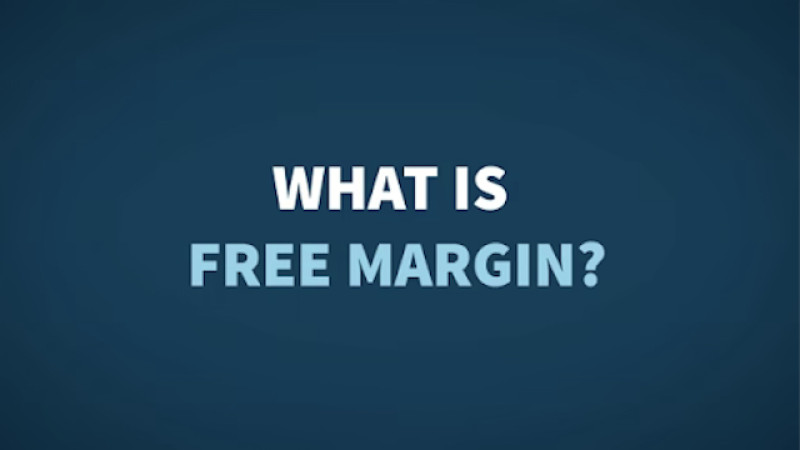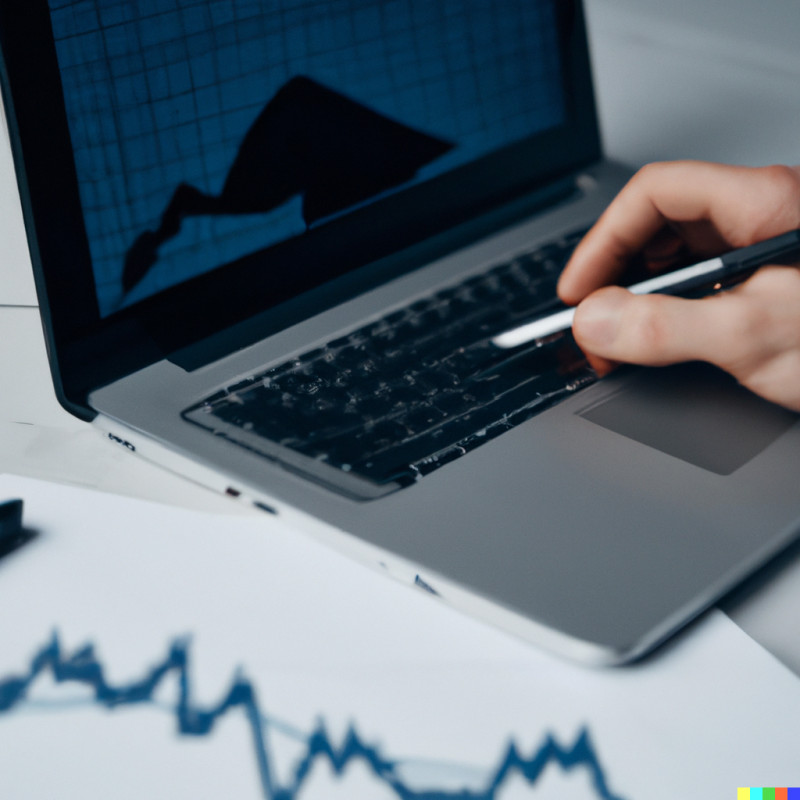
What is Margin in Forex Trading?
Margin is a term that is commonly used in forex trading and refers to the amount of money required to open and maintain a position. In other words, it is the minimum amount of money that a trader needs to have in their account to open a trade. Understanding margin is essential for any trader who wants to participate in the forex market, as it plays a crucial role in determining the size of a trade, and the potential profits and losses.
How Does Margin Work?
Margin works by allowing traders to open trades that are larger than the amount of money they have in their account. When a trade is opened using margin, the trader is effectively borrowing money from the broker to trade with. In return, the trader is required to deposit a collateral deposit, known as the margin, to secure the trade. The trader can then use the borrowed money to open a trade and potentially make a profit. However, if the trade results in a loss, the trader will be required to cover the loss with their own money.

What is Margin Requirement?
The margin requirement is the amount of money that a trader needs to have in their account to open a trade. This requirement varies depending on the size of the trade and the specific instrument being traded. For example, in forex trading, the margin requirement is usually a percentage of the trade size. The exact percentage will depend on the specific broker and the instrument being traded.
What is Required Margin?
The required margin is the amount of money that a trader needs to have in their account to open and maintain a position. It is calculated by multiplying the trade size by the margin requirement. For example, if the margin requirement is 2% and the trade size is $100,000, the required margin would be $2,000.
How to Calculate Required Margin
Calculating the required margin is a simple process. All you need to do is multiply the trade size by the margin requirement. For example, if the trade size is $100,000 and the margin requirement is 2%, the required margin would be $2,000.
Used Margin
Used Margin is a term that is commonly used in trading, particularly in the context of margin trading. It refers to the amount of money that is being held as collateral for a trade. In this article, we will take a closer look at what used margin is, how it is calculated, and its importance in margin trading.
What is Used Margin?
Used margin is the portion of the margin that is being used to open and maintain a position in the market. When a trader opens a position in the market, they must deposit a certain amount of money, known as the margin, as collateral for the trade. This margin is used to secure the trade and is held by the broker. The amount of money that is used from the margin to open a trade is known as the used margin.
Calculating Used Margin
Used margin can be calculated by multiplying the trade size by the margin requirement. For example, if the trade size is $100,000 and the margin requirement is 2%, the used margin would be $2,000. It's important to note that the used margin is not a fixed amount and can change as the value of the trade changes. If the value of a trade increases, the used margin will increase, and if the value of a trade decreases, the used margin will decrease.

Importance in Margin Trading
Used margin is a crucial factor in determining the potential profits and losses of a trade. When the value of a trade increases, the used margin will increase as well, resulting in potential profits. On the other hand, when the value of a trade decreases, the used margin will decrease, resulting in potential losses.
It's important for traders to monitor their used margin and adjust their positions accordingly to manage risk and avoid potential margin calls. A margin call occurs when the equity in a trader's account falls below a certain level set by the broker. This can happen if the value of the trader's open positions falls, or if the trader does not have enough money in their account to cover the used margin. When a margin call occurs, the trader will be required to deposit more money into their account or close some of their open positions to bring their equity back above the minimum level set by the broker.
Takeaway
Used margin is an important concept for traders participating in margin trading, as it is the amount of money that is being held as collateral for a trade. By understanding how used margin is calculated and its importance in determining potential profits and losses, traders can make more informed decisions about their trades and manage risk effectively. Regularly monitoring used margin and adjusting positions accordingly can help traders avoid potential margin calls and preserve their trading capital.
What is Equity?
Equity, also known as net asset value, is the value of an individual's assets minus their liabilities. In the context of trading, equity is the total value of a trader's account, including any realized and unrealized gains or losses. It is a key metric that traders and investors use to measure their financial performance and to determine their level of risk.
How to Calculate Equity If You Have No Trades Open
If you have no trades open, calculating your equity is relatively simple. It is equal to the balance in your trading account. For example, if you have a balance of $10,000 in your trading account, your equity would also be $10,000.
How to Calculate Equity If You Have Trades Open
If you have trades open, calculating your equity becomes slightly more complex. Your equity is equal to your balance plus any unrealized gains or losses from your open positions. For example, if you have a balance of $10,000 and an open position with a current unrealized gain of $1,000, your equity would be $11,000.

What is the difference between Balance and Equity?
Balance and equity are often used interchangeably, but they are not the same thing. The balance in a trading account is the total amount of money that an individual has deposited into their account. Equity, on the other hand, is the total value of a trader's account, including any realized and unrealized gains or losses.
In simple terms, the balance is the amount of money you have in your account, while equity is the value of your account, taking into account any open trades and their profit or loss.
Another difference is that equity is affected by the trades that you have open, as it takes into account any unrealized profits or losses. In contrast, the balance is not affected by any open trades.
Takeaway
Equity and balance are related but different concepts that traders and investors need to understand. Equity takes into account the value of an account, including any open trades and their profit or loss. Balance, on the other hand, is the total amount of money that an individual has deposited into their account. By understanding the difference between equity and balance, traders and investors can make more informed decisions about their trading and investment strategy, and ultimately, increase their chances of success.
What Is Free Margin in Forex?
Forex free margin refers to the amount of money in a trader's account that is available to open new trades. It is calculated by subtracting the margin used for open positions from the trader's account equity. The importance of free margin in forex trading lies in its ability to maintain open trades and avoid margin calls.
How Does Free Margin Forex Work?
Free margin in forex works by giving traders the ability to open new trades while keeping their existing ones open. When a trader opens a new trade, a portion of their account equity is used as margin for that trade. The amount of margin used will depend on the margin requirement of the currency pair being traded, as well as the trade size. The remaining equity in the trader's account is considered free margin.

Calculating Forex Free Margin
The formula for calculating free margin in forex is as follows:
Free Margin = Equity - Margin Used
Where:
Equity is the total amount of money in the trader's account
Margin Used is the total amount of margin used for open positions
For example, if a trader has an account equity of $10,000 and has used $1,000 in margin for open positions, their free margin would be $9,000.
Free Margin Example in Forex
Let's say a trader has $10,000 in their account and opens a trade with a margin requirement of 1%. If the trader buys $100,000 worth of currency, the margin used for that trade would be $1,000 (1% of $100,000). The trader's free margin would now be $9,000 ($10,000 - $1,000).
Free Margin vs Used Margin in Forex
It's important to note the difference between free margin and used margin in forex. Used margin is the amount of money in a trader's account that is being used to maintain open positions. Free margin, on the other hand, is the amount of money in a trader's account that is available to open new trades.
Margin vs Free Margin in Forex
Margin in forex refers to the amount of money required to open or maintain a trade, while free margin is the amount of money available in a trader's account after all margin requirements have been met.
Free Margin and Margin Level in Forex
Maintaining a healthy level of free margin and margin level is crucial in forex trading as it allows traders to open new trades and avoid margin calls. This can be achieved through proper risk management and by carefully monitoring open positions. It is important for traders to understand the concept of free margin and how to calculate it in order to make informed trading decisions.

Margin level
Margin level is a term used in the field of finance, specifically in the realm of trading. It is a measure of a trader's or investor's equity in relation to their margin debt. This metric is used to determine the level of risk associated with a particular trade or investment, as well as to assess the overall health of an individual's trading or investment portfolio.
What is Margin Level?
Margin level is a term used to describe the relationship between the amount of money in a trader's or investor's account and the amount of margin debt they have incurred. In simple terms, it is the ratio of equity to margin debt. This ratio is expressed as a percentage and is used to determine the level of risk associated with a particular trade or investment.
How is Margin Level Calculated?
Margin level is calculated by dividing the total equity in a trader's or investor's account by the total margin debt incurred. The resulting percentage is then used to determine the level of risk associated with the trade or investment. For example, a margin level of 50% means that the trader or investor has twice as much equity as margin debt.
Why is Margin Level Important?
Margin level is an important metric for traders and investors to understand because it helps them to determine the level of risk associated with a particular trade or investment. A high margin level indicates that a trader or investor has a significant amount of equity relative to their margin debt, which means that they have a lower level of risk. Conversely, a low margin level indicates that a trader or investor has a significant amount of margin debt relative to their equity, which means that they have a higher level of risk.
Additionally, margin level is important to maintain a proper balance of risk and reward. A low margin level indicates that the trader or investor has a higher level of risk and therefore, a higher potential for loss. In contrast, a high margin level indicates that the trader or investor has a lower level of risk and therefore, a lower potential for loss.
Takeaway
Margin level is an important metric for traders and investors to understand. It is used to determine the level of risk associated with a particular trade or investment, and it can help traders and investors to manage their risk and maintain a proper balance of risk and reward. By monitoring their margin level, traders and investors can make informed decisions about their trading or investment strategy, and ultimately, increase their chances of success.

What does “Margin Call Level” or “Margin Call” mean?
In the world of trading, a "Margin Call Level" or "Margin Call" is a term used to describe the point at which a trader's account is at risk of not being able to meet the margin requirements set by the broker. When this occurs, the broker will typically issue a "Margin Call" to the trader, which is a request for the trader to either deposit more funds into their account or to close out some of their open positions.
What is a Margin Call?
A Margin Call is a request from a broker to a trader to deposit additional funds into their account or to close out some of their open positions. This is typically done when the trader's account falls below the minimum margin level required by the broker. A margin call is a warning signal that the trader's account is at risk of not being able to meet the margin requirements set by the broker.
"Margin Call Level" vs. "Margin Call"
It is important to note that "Margin Call Level" and "Margin Call" are not the same thing. "Margin Call Level" refers to the point at which a trader's account is at risk of not being able to meet the margin requirements set by the broker. "Margin Call" is the request from the broker to the trader to deposit additional funds into their account or to close out some of their open positions.
Why Do Margin Calls Happen?
Margin calls happen when a trader's account equity falls below a certain level, known as the margin maintenance level. This level is set by the broker and is typically a percentage of the trader's total account value. When the trader's account equity falls below this level, the broker will issue a margin call to the trader to deposit additional funds or close out some of their open positions.
How to Avoid Margin Calls?
The best way to avoid margin calls is to maintain a sufficient level of equity in your trading account. This can be done by regularly monitoring your account and adjusting your trades as necessary to maintain a sufficient level of equity. Additionally, it is important to be aware of the margin requirements set by your broker and to understand the potential risks associated with trading on margin.

Another way to avoid margin calls is to use stop-loss orders, which are designed to automatically close out a trade when a certain price is reached, thus limiting the potential losses. It's also important to use proper risk management techniques such as using proper position size, diversifying and not to overleverage.
What Happens When A Margin Call is Issued?
When a margin call is issued, the trader has a few options. They can deposit additional funds into their account to bring their equity back above the minimum margin level. They can also close out some of their open positions to reduce their margin debt. If the trader is unable or unwilling to take either of these actions, the broker may be forced to liquidate some or all of the trader's open positions to bring the account equity back above the minimum margin level.
Example: Margin Call Level at 100%
For example, if a broker has a margin call level set at 100%, and a trader has an account with a balance of $10,000 and a margin debt of $10,000, the trader's account would be at risk of not being able to meet the broker's margin requirements. In this case, the broker would issue a margin call to the trader, requesting them to either deposit more funds into their account or to close out some of their open positions.
A Margin Call is an important concept in trading, as it is a warning signal that a trader's account is at risk of not being able to meet the margin requirements set by the broker. By understanding the difference between "Margin Call Level" and "Margin Call", traders can make more informed decisions about their trading strategy and ultimately increase their chances of success. It is important for traders to monitor their margin level, and to be prepared to act when a margin call is issued.





